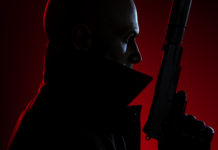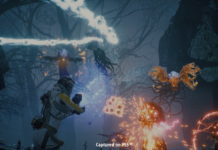Imagine a
world of lush environments. The sun is beautifully bright, and at night the
sky is darkened with a navy blue hue. The clutter of modern-day society
(smog, busy streets, angry businessmen) is nothing more than fiction. The
townspeople are actually sweet, and the worlds are comprised of villages you’d
enjoy visiting. They’d make the perfect vacation spot for some, and a decent
place to explore for others.
Such a place
no longer exists on Earth, except in the world of Sudeki. On the outside it
looks like a classic RPG that has evolved for a new generation. On in the
inside – now that’s a different story.
Sudeki’s
gameplay is anything but traditional. I’ll refer to it as an action/RPG to
help further your understanding of how the game plays, but in reality it’s
quite different from that.
Fans of
Brute Force will remember that it included four playable characters. One was
always in your control, the other three could be given orders and hopefully
follow them. Players could switch between the four characters at any time,
allowing them to coordinate attacks and complete the game in an orderly,
team-based fashion.
Sudeki is
what Brute Force might have been like if it had been an RPG. This is not a
team-based game, so you do not coordinate attacks like you do in Brute Force.
However, you are given teammates to spice up the repetitive combat. They’ll
help you take out the many minions that stand in your way. When a puzzle
becomes too perplexing for one character to solve, or when an area cannot be
accessed by the character you’re controlling, chances are it’s time to switch.
Your four
heroes include Tal, Ailish, Buki and Elco. Tal carries a big sword, wears big
boots, and sports an unhappy look on his face at all times. He was miserable
as a child, making him the perfect candidate for someone who grows up and
redeems his horrible life by becoming a hero. Ailish doesn’t hold the same
disdain for the world that Tal has, living a happy life as both a princess and
a powerful magician. Buki is a cat-like half-breed (half human and half
animal), while Elco is a young male (human) scientist who has made an amazing
discovery: certain crystals possess great magical power.
Each of
these characters has a special ability that makes them a key ingredient in
baking the game’s cake. Translation: Tal is strong and can move large
objects. Ailish’s special ability is magical sight, meaning that she can see
things that others can’t. Buki can use her claws to climb (indicating the
heritage of her animal ancestors). And Elco can fly over crevasses with his
unusual rocket pack. You wouldn’t expect to see one of those in a game like
this, but that’s likely the point.
Combat is
divided into two forms: ranged and melee. The game starts off in melee,
playing very much like a 3D hack-n-slash. More intelligence is needed to
conquer Sudeki’s beasts (you can’t simply button-mash), but it’s still nothing
like Alundra, Brave Fencer Musashi, or any other action/RPG you’re used to.
The A and X
buttons are your primary source for attacking, launching vertical and
horizontal attacks, respectively. If you press the B button you’ll find that
it takes longer for the character to respond, but doing so unleashes a decent
attack that hits several enemies at the same time. Slow or not, you’ll end up
using this attack a lot, thanks entirely to the dozens of monsters that love
to corner their dinner before feasting. Surely you can’t let that happen.
Turn those beasts into a roast that only The Grinch would eat.
I’ve
complained about console games that use only two or three buttons for
attacking, and five or six buttons for something less important. It must be
said that in spite of this decision, Sudeki’s combat did not suffer. It
suffers in other ways (which I’ll get to later), but the button limitations
were not a problem. I was able to perform six different combos with the A and
X buttons just five minutes after starting the game. There were still more
combos to be learned, more characters to acquire, and another gameplay style
to discover.
That other
style is the ranged-combat mode. It turns the game into a first-person
shooter, letting players cast spells from a different perspective. It also
lets you use unique magic-infused weapons.
In execution
the concept is somewhat rewarding and somewhat disappointing. The
maneuverability — being able to strafe, target specific enemies, avoid damage
by attacking from afar, etc. – is great. But the game does not move very fast
in first-person mode. It’s not a frame-rate issue. Aside from clipping,
which only occurs in certain parts of the game, Sudeki’s frame rate is fine.
But in first-person mode I wanted to whip past enemies and dodge attacks just
as quickly as I could in Halo or Golden Eye. Perhaps that’s asking too much
from this game.
Magic spells
are located inside the quick menu, which can be accessed by pressing the Y
button. Press it to freeze the game, take your time to choose the most
desirable spell, and select it whenever you’re ready to go back into combat.
Spells consist of the usual elemental effects, including fire and ice. Not
too exciting and not exactly original, but you couldn’t call this game an RPG
without them.
All of these
things are good on their own, and together they’re even better. Where’s the
problem then? It’s all in how the game executes them. The elements are
there, but they seem incomplete.
The camera
is terrible. It jumps around more than a group of moshers at a punk-rock
concert. As enemies surround the area and you retaliate, the camera jerks in
various directions. Sometimes it will zoom out for no apparent reason.
Several Xbox games – many of which have better graphics and faster gameplay
than Sudeki – have excellent cameras. There’s no excuse for this flaw,
especially when it makes the gameplay hard to enjoy.
Gameplay: 7.7
Hack-n-slash
meets first-person spell-casting. It hasn’t been done before, but now that it
has we know it’s a good combination. Players will fight feelings of being
engaged and detached to the gameplay, primarily due to Sudeki’s jumpy camera
and lack of change. Without those two flaws you’d be constantly engaged in
the combat, which is some of the best hack-n-slash action available for the
Xbox. The first-person aspects could have been seriously improved with an
increase in speed. Even a slight increase would have made a world of
difference.
Graphics: 7.9
Sudeki looks
great…or does it? The beauty is in constant question. I’m in love with the
architecture, and wish the game’s villages existed in real life. The trees
are also impressive, as are the enormous shadows that they cast.
As I’m
staring at the trees I realize that they aren’t moving. The leaves don’t sway
in the wind. The shadow never changes, nor does it have much interaction with
the characters.
The water
has a nice wave effect, but other than that it doesn’t look very realistic.
More
impacting than any of that, however, is the four stars of the game. They
don’t look real. Their flesh, armor, and hair – everything looks like a video
game. Five years ago that would have been okay. Many of Xbox’s games can
compare nicely to CG movies, and in a few rare cases, they can even compare to
real life. Sudeki can’t.
Sound: 8
Too many
voice-overs, not enough music. Sudeki has a great opening them, some unusual
tracks during the story sequences, and many great songs later on in the game.
Much of the game is silent though, with the exception of sound effects and
sub-par voice-overs. The acting is pretty bad, and the dialogue is even
worse. Whatever you do, don’t buy Sudeki if all you really want from RPGs is
a compelling story.
Difficulty: Medium/Hard
Sudeki’s
difficulty level is a bit surprising. The almost-constant flow of enemies
will be hard to defeat until you’ve gained more experience and superior
weaponry. A word of advice: stock up on health items, and remember to use
Tal’s shield. It’s there for a reason.
Concept: 8.7
From a conceptual
standpoint this game is great. Sudeki is the first action/RPG to combine
third- and first-person-style combat. We’ve seen first-person RPGs before,
but not with this kind of activity.
Multiplayer: N/A
Overall: 7.7
If the camera was
perfect, there’d still be one more crack to patch up, and this one’s a biggie:
repetition. Whether you’re killing monsters up-close-and-personal or taking
them out from afar, Sudeki never changes. It never grows, or moves to a new
place. Playing through this game once is like watching the same action flick
several times in a row. You’ll be entertained the first time through, but
something is lost during the second viewing. That’s how Sudeki feels – like
you’re always on your second viewing.









